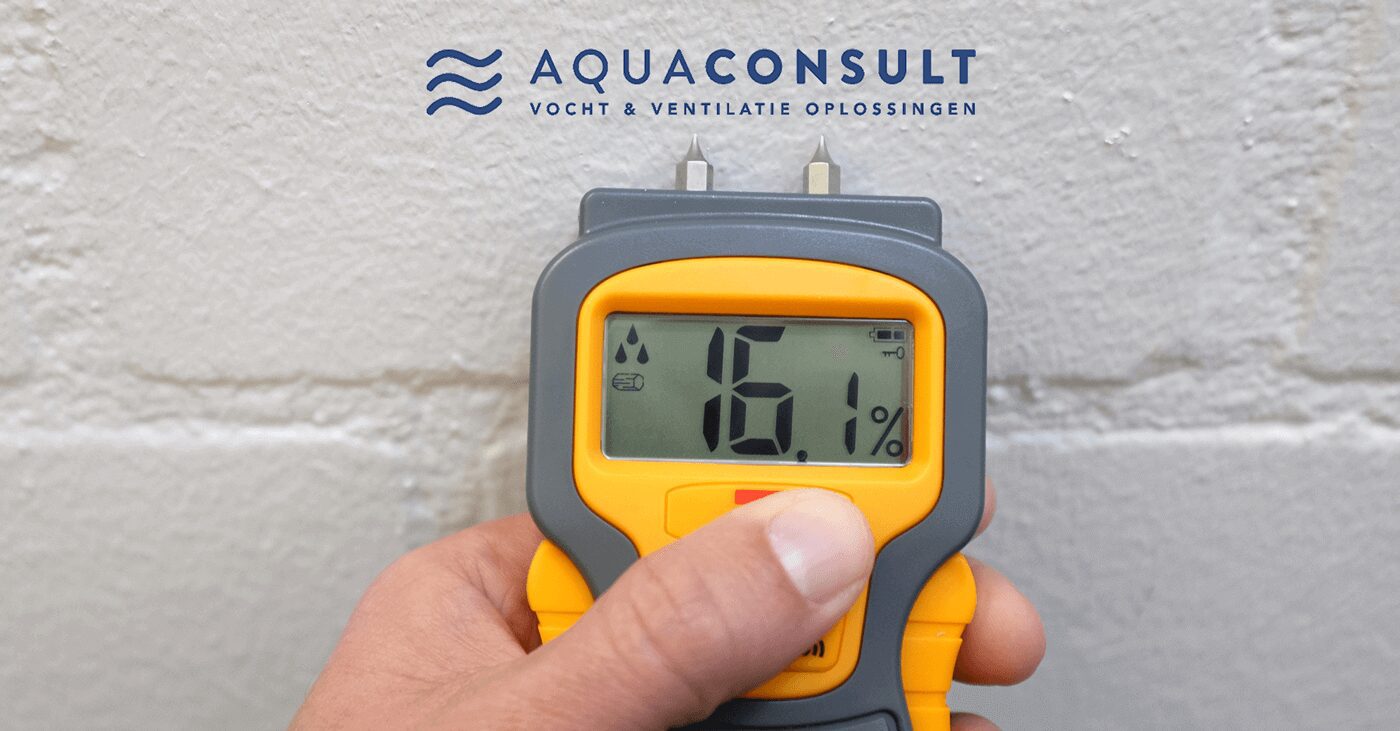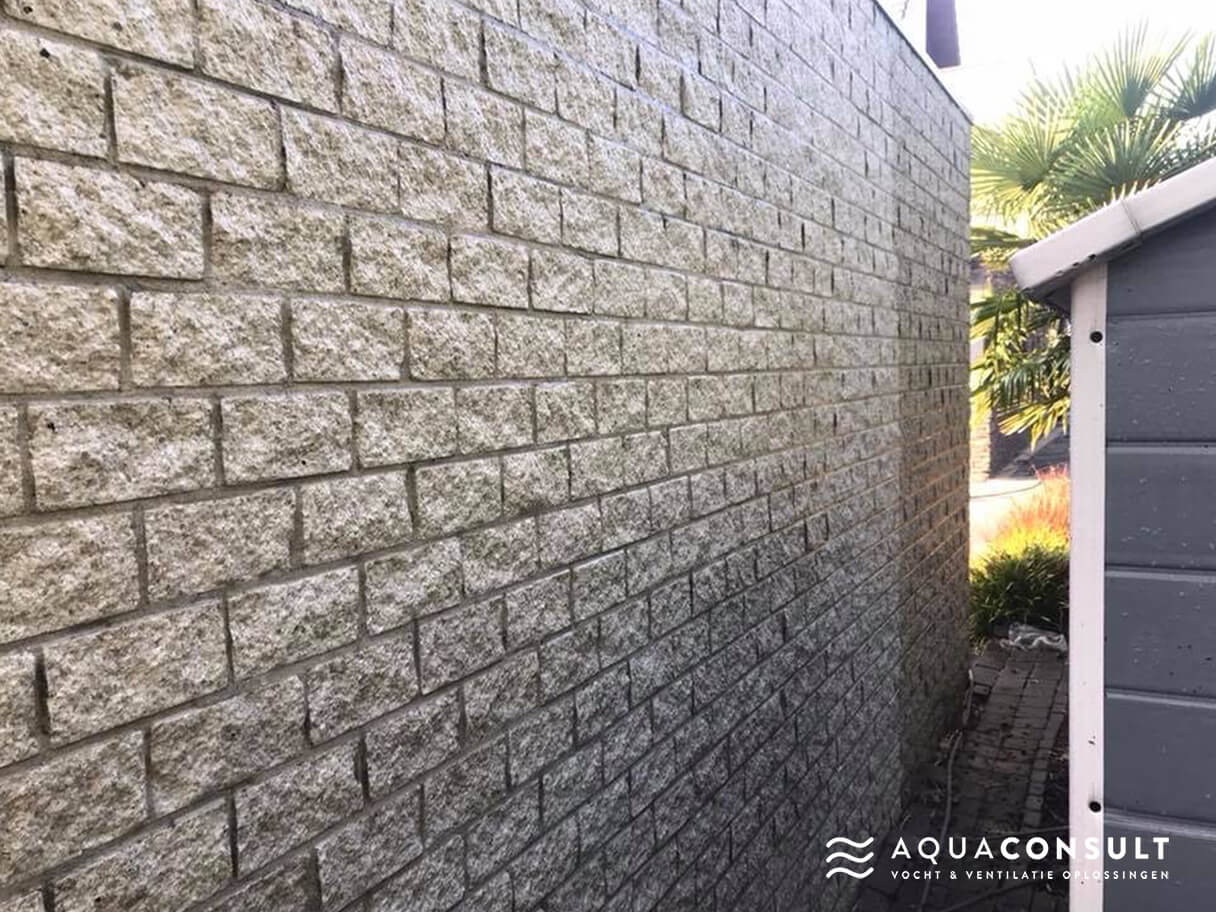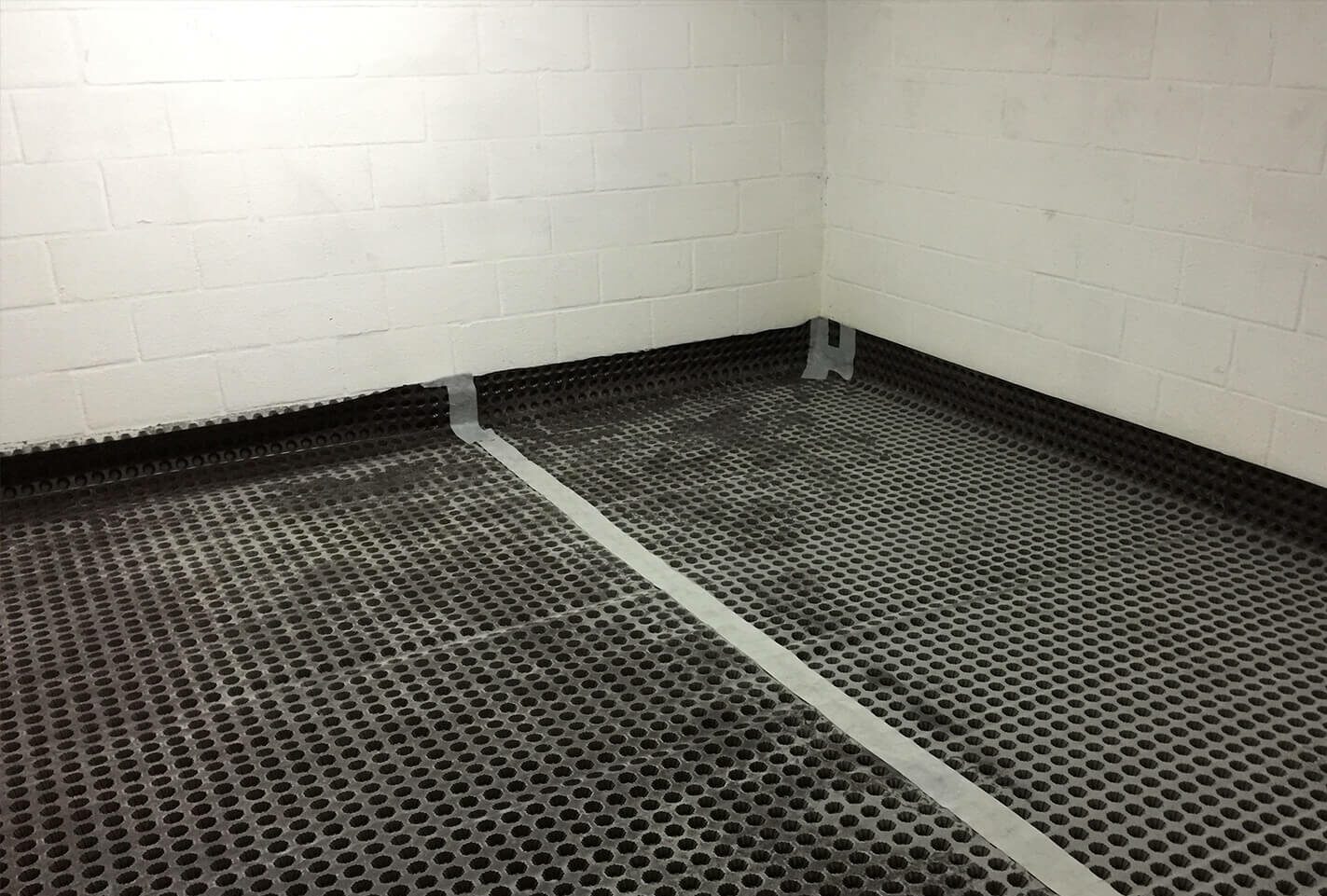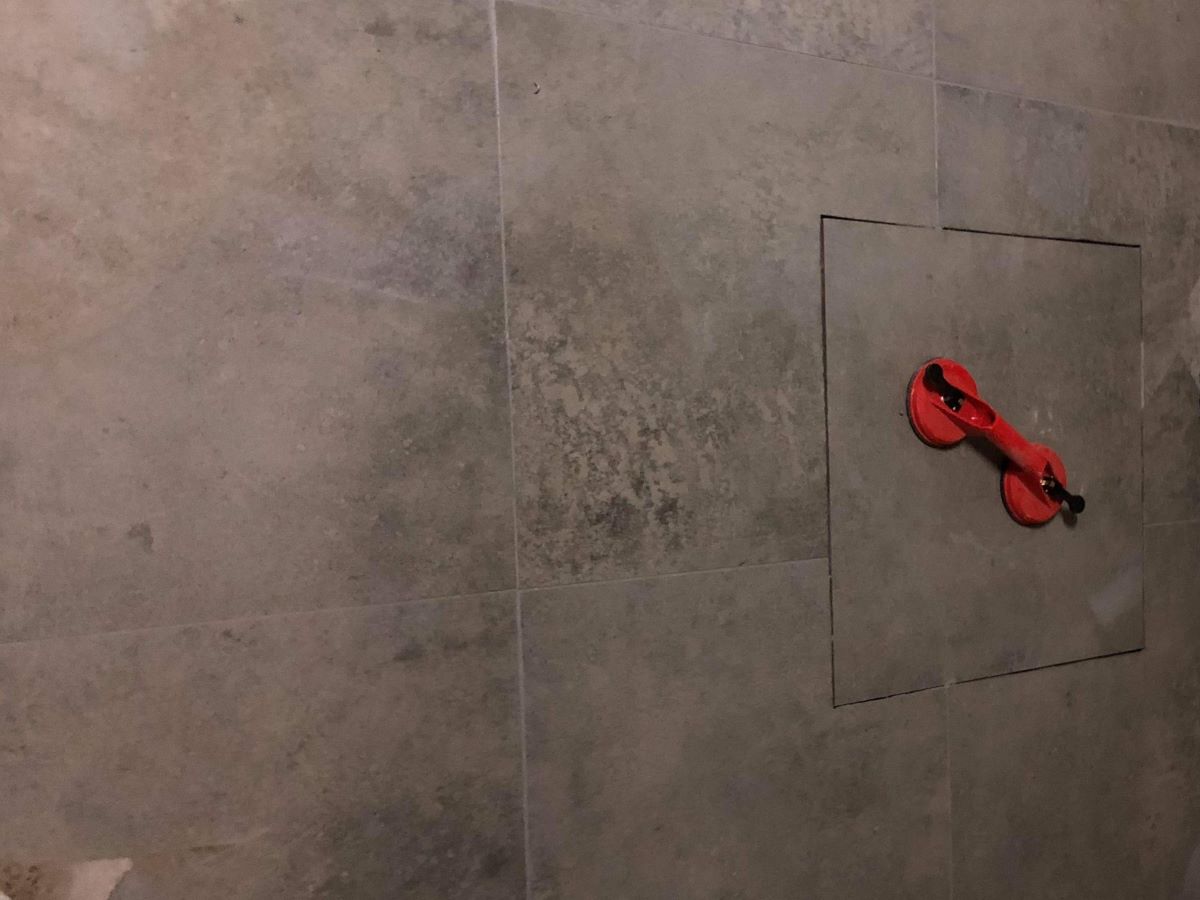Air-to-air heat pump: cool and heat with ease
Having an air-to-air heat pump installed?
An air-to-air heat pump is a type of heat pump that allows you to both heat and cool your indoor space. So it is similar to an air conditioning system, but with more options.
This type of heat pump is mainly known in the form of a monoblock air conditioning system: an air conditioning system where there is no outdoor unit. It is very popular because of its cost-effectiveness and relative simplicity of installation. Find out all about an air-to-air heat pump in this article.
Quickly find your answer:
- Is an air-to-air heat pump for you?
- How does an air-to-air heat pump work?
- Advantages and disadvantages of an air-to-air heat pump without an outdoor unit
- The price of an air-to-air heat pump
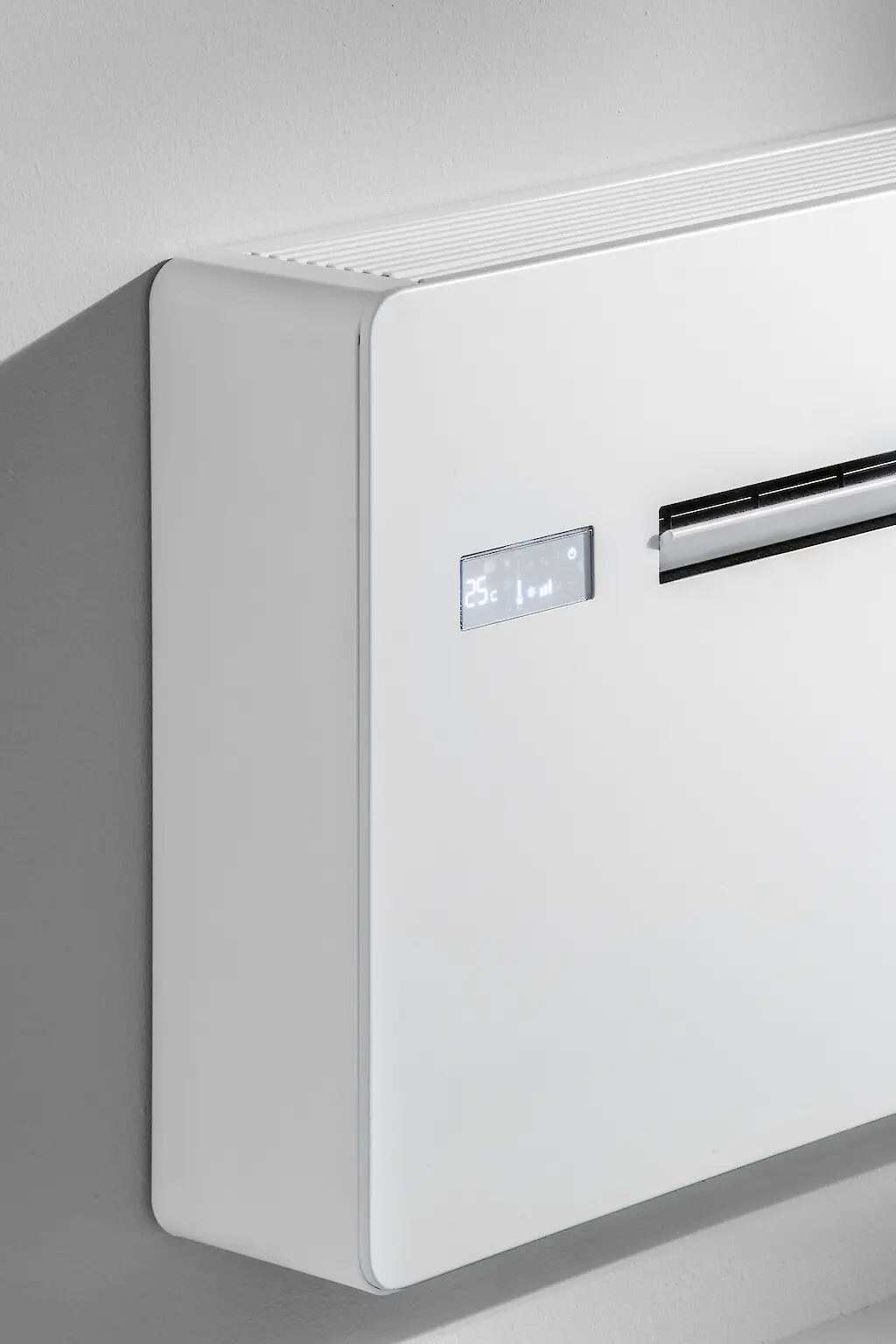
When is an air-to-air heat pump interesting?
An air-to-air heat pump is a convenient system for temperature control, but it is important to know when it is an appropriate choice. Here are some situations when considering an air-to-air heat pump makes sense:
- When you want both heating and cooling.
- Replacement for an electric heating system. If you currently have electric heating, switching to an air-to-air heat pump can save costs and be more environmentally friendly.
- As a new central heating system. For homes without central heating, an air-to-air heat pump can be a good option, especially in smaller homes where individual temperature control in each room is desired.
- In small and well-insulated homes. An air-to-air heat pump is efficient in well-insulated, small homes where heat retention is good.
However, there are situations where an air-to-air heat pump is less suitable, such as in poorly insulated homes, large homes that require multiple (indoor) units, and when there is no suitable space for both the indoor and outdoor units. In general, an air-to-air heat pump is best suited as supplemental heating or in smaller, well-insulated homes.
How does an air-to-air heat pump work?
When an air-to-air heat pump heats a room, it draws in indoor air using a fan. A compressor located inside the unit compresses the refrigerant gas, raising its temperature. This heated gas then passes through a heat exchanger, transferring the heat to the air. This heated air is blown into the room, and this is repeated until when the room is at the desired temperature. Cooling a room proceeds in just the opposite manner.

The pros and cons of an air-to-air heat pump without an outdoor unit
There are an awful lot of advantages to an air-to-air heat pump without an outdoor unit. Here are some of the many advantages:
- You can easily and quickly heat and cool your indoor spaces.
- An air-to-air heat pump is also available without a visible outdoor unit.
- The unit is easy to install.
- You lose little space.
- Air-to-air heat pump is much cheaper than an air conditioning split system.
- In summer, with the air-to-air heat pump, combined with the digital counter (with solar panels) you can cool the house for free at the cost of the sun.
There are also a few (more limited) drawbacks to mention:
- Not suitable for all homes or situations.
- When it is very cold outside, the efficiency is a bit lower.
- An air-to-air heat pump cannot be connected to an existing heating system.
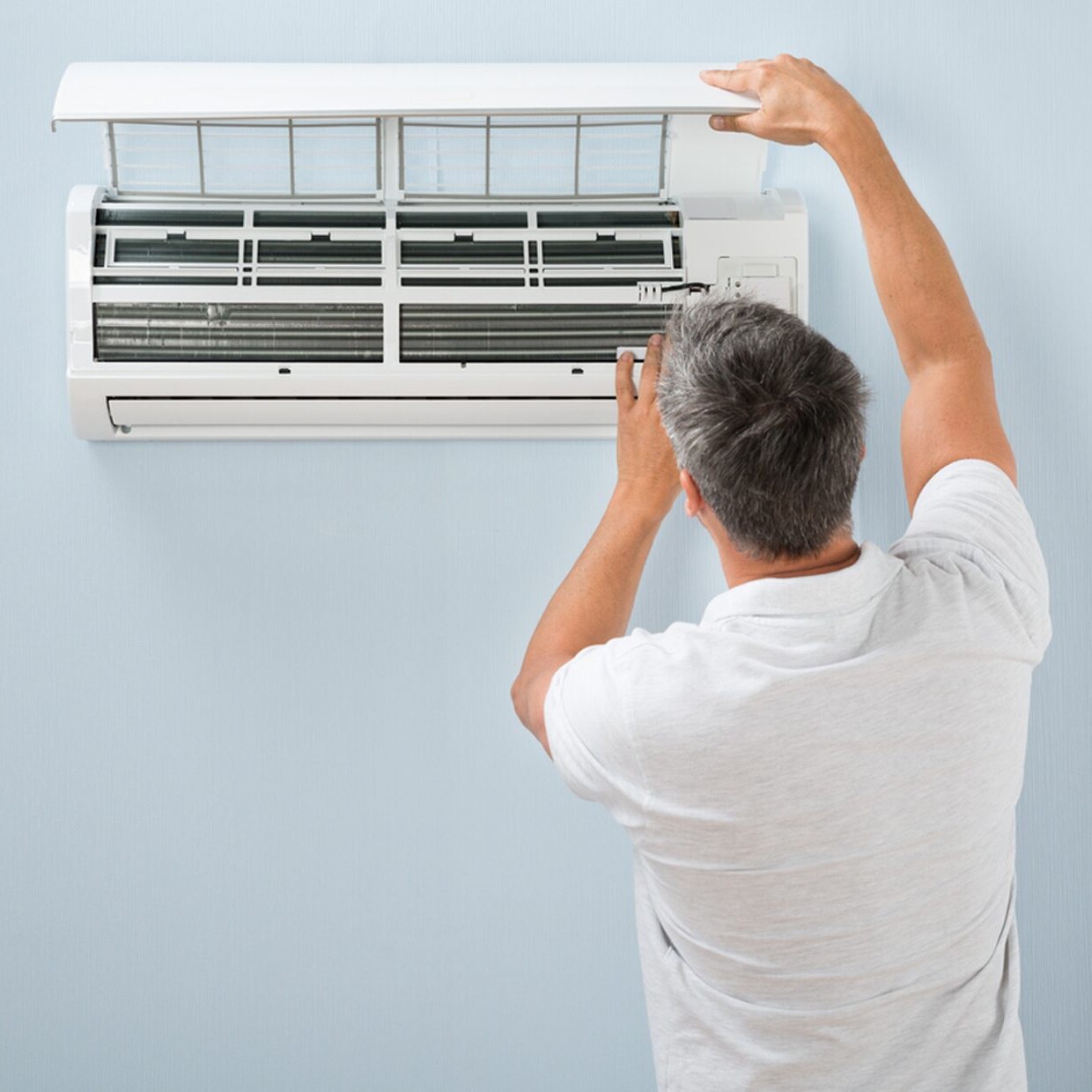
Are you considering an air-to-air heat pump?
Are you considering buying an air-to-air heat pump? A wise idea: you'll find the best value for money with this type of air conditioner.
AquaConsult specializes in air conditioners without outdoor units with this air-to-air heat pump technology. For this, we work with our sister company AeroConsult, which specializes in monoblock air conditioners and heat pumps (both for air and domestic water). These air-to-air heat pumps can also be coupled with ionizers. This is one of AeroConsult's strengths: we offer the ability to add additional air purification. Our ionizers remove all impurities from the air, including bacteria, viruses, pollen and particulate matter.
How much does an air-to-air heat pump cost?
Are you considering installing a monoblock air conditioner without an outdoor unit? Then request more free information on price, maintenance, installation, energy consumption and functions for winter and summer. The price depends on the area of the room and the type of installation. Therefore, ask one of our air conditioning specialists for all options without obligation.
How do I maintain ideal humidity in my home?
How pleasant the indoor air in your home feels is often related to humidity. Is the humidity in the house too high or too low? Then it can cause ailments and health problems as well as damage to your home. But what is the ideal humidity level? And how do you check it?
What is humidity?
By (relative) humidity we mean the number of particles of water vapor circulating in the air at any given time. A good humidity is between 40% and 60%. The air at that time consists between 40% and 60% of particles of water vapor. The ideal level of humidity in the house is 50%.
What if the humidity in the house is not right?
There are two possible scenarios: the humidity in the home can be either too low or too high. Each of these situations has its own consequences.
What are the consequences of too low humidity?
When humidity is too low, the air in the house is too dry and the relative humidity is below 40%. Low humidity is especially common in winter because the cold air contains less moisture. Typically, too low humidity can cause the following:
- Because of dry air, you may suffer from minor ailments such as cracks in your lips, dry eyes, headaches and irritation to your mucous membranes or your airways (which manifests as an itchy cough). It can also make it harder for you to concentrate and make you more tired.
- It can also cause minor damage in your home in the form of cracks in woodwork, such as the floor or furniture.
Nevertheless, too low humidity in the home is not a major problem. The problems really start when the humidity is too high.
What are the consequences of excessive humidity in the home?
Is your humidity too high? Then the relative humidity is higher than 60%. There are many different possible causes for this, many of which are not always easy to detect. Everyday activities from washing, cooking, ironing to simply breathing and perspiring contribute to increased humidity. In fact, scientific studies show that an average family produces up to 15 liters of excess moisture per day. That's not nothing! But an underlying moisture problem can also cause humidity levels in the home to be too high.
The consequences of too high humidity in your home are worse than those of too low humidity; both for your home and for your own health.
- You will often notice condensation moisture in heated spaces such as your living room or bathroom. There is always a movement of air between a warm and unheated room. Because of the lack of (mechanical) ventilation, this moist air will condense in the colder rooms, and more specifically on cold surfaces.
- Damage to the house may follow. This usually comes in the form of mold on the walls, loose plaster or wallpaper, wood rot and dust mites and other pests popping up. Such issues are especially prevalent in the bathroom. That air always has high humidity - due to your washing - and is very prone to problems such as dampness and mold. So when you know that some mold in the home secretes extremely toxic substances, you want to avoid it at all costs.
- Also, the air smells musty.
- In addition, your energy bill may be skyrocketing. This is because a humid room is much more difficult to heat than a room with normal humidity. Studies show that you need to use 20% more energy to heat a humid room.
- Are you already suffering from underlying conditions? Then excessive humidity can cause a lot of health problems. Excessive humidity worsens conditions such as rheumatism or asthma, dust mites can trigger allergies, and children, the elderly or those with weaker immune systems can suffer additional respiratory and pulmonary problems. Especially since excessive humidity means there is not enough fresh air and oxygen in the air.
So it is not a luxury to do something if you suffer from excessive humidity in your home.
Measuring humidity
You can measure the humidity in your home yourself using a hygrometer. This is a measuring instrument specifically designed to measure humidity levels in the home. This can help you understand humidity levels in the indoor environment.
To ensure an accurate reading, it is important to place the hygrometer correctly. You obviously want to get a representative reading of the humidity so that you can take appropriate action if the air turns out to be too dry or too humid. That's why we recommend not placing the hygrometer on the wall of an exterior wall or near a window. This is because the humidity near external walls and windows often differs somewhat from the rest of the house.
A hygrometer is available these days for as little as 15 euros. Usually these handy devices also have other useful functions.

How can I optimize humidity in my home?
Tips for better humidity in the home
- Ventilating your home adequately is always a good idea. Open your windows for about 15 minutes daily, and ventilate extra when cooking or showering.
- If the increased humidity is confined to one room (for example, a damp bathroom or bedroom), an exhaust system or dehumidifier can help.
- Always turn on your cooker hood while cooking and also clean it regularly.
- Cook with lids as much as possible, try to dry your laundry outside as much as possible, and wait a while to open your dishwasher when it's done.
- Sometimes an abnormal humidity in your home is not caused by poor ventilation, but by an underlying moisture problem. In such cases, it is advisable to take appropriate moisture control measures in addition to your ventilation system. It is wise to enlist the expertise of a professional for this purpose.
A universal and definitive solution: balanced ventilation
The best optimal solution, in other words the solution that guarantees the best humidity in the home, is to install a mechanical ventilation system, preferably a balanced ventilation. With a balance ventilation, you have total control over the air in your home. Does the indoor air have excessive humidity? Then you can easily take that air outside and bring in fresh air. Not only does this help control the number of water vapor particles in the air in your home, but it also provides fresh air with plenty of oxygen. Things that allow you to breathe better and thus make your lungs and airways less likely to suffer.
Are you suffering from excessive humidity somewhere in Flanders? Contact Aquaconsult now and our experts will be happy to help you.
Cold bridges: cause of moisture problems and condensation
What are thermal bridges?
A thermal bridge is a weak link in your home's insulation. Cold bridges occur where insulation is lacking or poor. It is literally a place in a home where the "cold" is conducted from outside to inside. They are also called thermal bridges, thermal bridges or building knots.
The insulation shell is missing or interrupted, resulting in heat loss. As a result, the interior temperature drops and there is a greater need for heat. In addition, thermal bridges can also indirectly cause moisture problems. Moisture and thermal bridges are always the biggest problems in all renovation projects.
And that's not all: cold bridges can also cause problems in the summer. For example, thermal bridges allow warm air to enter, making it difficult to keep your home pleasantly cool.
The causes of cold bridges
Thermal bridges can have a variety of causes.
- Most thermal bridges occur at breaks in the insulation, in other words, when insulation materials do not fit together seamlessly.
- Cold bridges can also occur where there is no insulation at all. In older homes, this is often seen near shutters and floors.
- Less well known is that aged exterior joinery can also be a source of cold bridges. Older profiles sometimes contain no thermal break, allowing cold to run free.
Where are the cold bridges in a house?
A thermal bridge often occurs in all places where insulation does not connect properly. You can therefore sometimes detect a thermal bridge very clearly around exterior doors and windows, where the insulation is not optimally connected to floors or the door and window openings themselves. A few millimeters of opening is enough to allow a cold bridge during a cold winter period. Of course, a few millimeters of insulation loss will not cause serious moisture problems, but it will slightly increase energy bills.
Some examples of places where thermal bridges can occur:
- Transition from a wall to a window
- Window frames
- Eaves
- The place where the floor is in contact with the cavity wall
How do you recognize cold bridges?
You can't always see a thermal bridge, but you can feel it. If you rub your hand over a piece of wall or floor and notice a difference in temperature, you are dealing with a thermal bridge. If you see black mold or condensation on concrete slabs or windows, that can also be an indication of a thermal bridge.
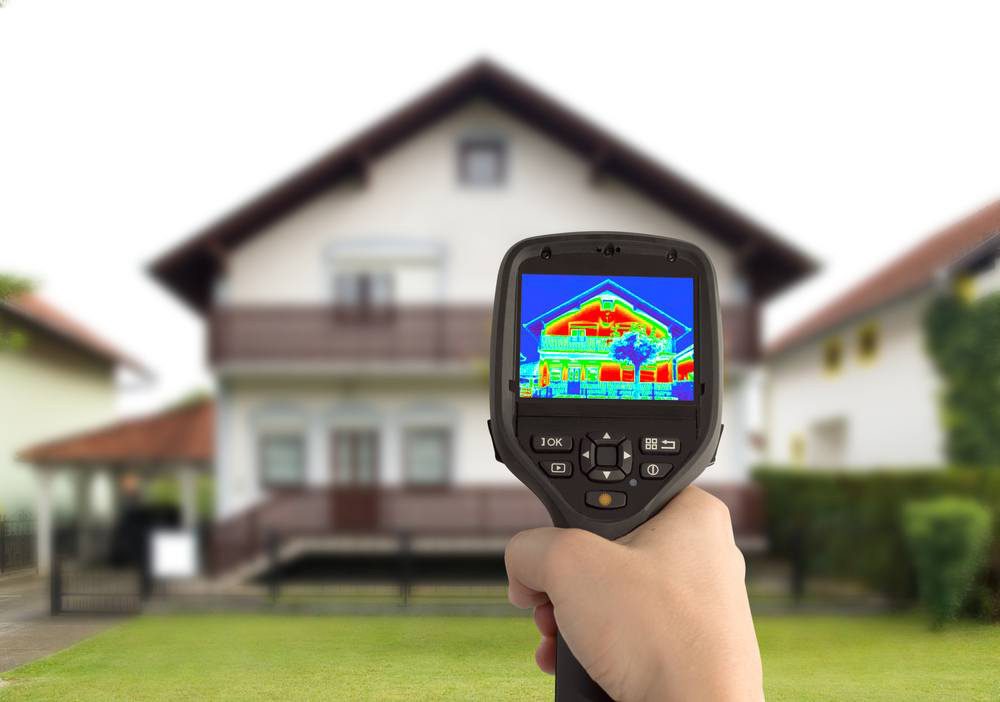
Which (moisture) problems cause cold bridges?
Cold bridges are the cause of a lot of moisture problems in the home. Especially alarming is the structural moisture damage it can cause on the cold wall. A cold bridge weak enough to cause the wall temperature to drop below 14°C encourages moisture problems such as condensation.
Where indoor moisture (which is naturally present in the warm indoor air) can condense against walls, mold gets a chance to form and moisture stains also develop. Houses with condensation and mold are additionally just not good for your health. Moreover, it is bad for plaster, wallpaper and/or painting. With wood structures, in turn, it can cause the wood to rot, resulting in instability. It's a real domino effect.
As the walls cool down sharply at the height of a thermal bridge, the natural moisture in the air will condense in these places.
Not only do cold bridges create moisture problems, but they also create another major problem: energy and heat loss. As mentioned earlier, thermal bridges create a temperature difference between the wall where there is a thermal bridge and the rest of the house. So in the winter, you will need more energy to heat your home, resulting in higher energy bills. With today's high energy prices, you obviously want to get that out of the way.
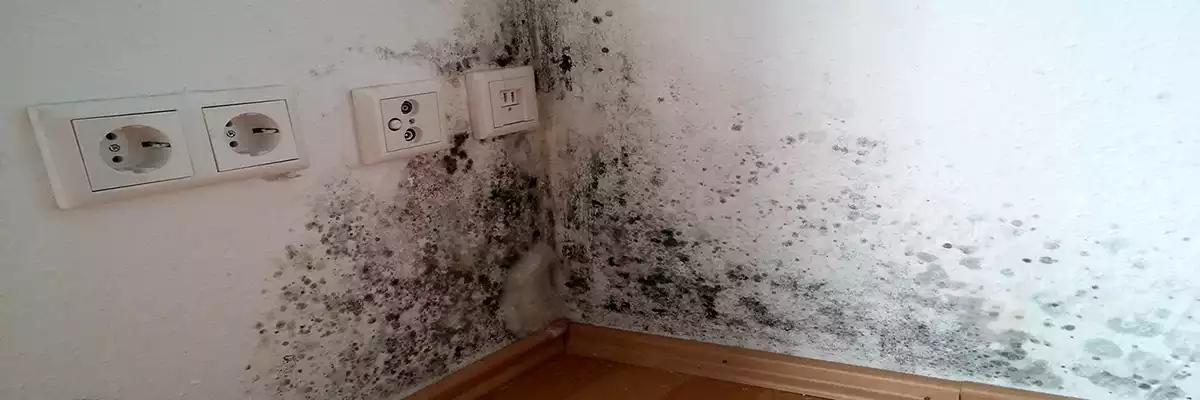
Influence of thermal bridges on the K and E levels
The Flemish government encourages homeowners to better insulate and airtighten houses (think of cavity wall insulation or crepi / exterior wall insulation). A renovation aimed at eliminating thermal bridges has several advantages for the value of the property:
- A more positive K-level (a degree of thermal loss due to the building envelope)
- A more positive E-level (a measure of the overall energy performance of a building)
How do you solve cold bridges?
Proper ventilation, insulation and heating are 3 rules of thumb to prevent cold bridges.
In older homes, it is not always simple to address thermal bridges; this is immediately a major renovation. Fortunately, you are entitled to grants or subsidies if you perform an energy renovation.
During such a renovation to solve thermal bridges, all insulation is properly connected to each other so that the insulation envelopes the entire house and there are no more energy leaks. If the insulation is completely continuous and not defective anywhere, thermal bridges do not stand a chance.
Is it really worth tackling thermal bridges, given that it is such a major renovation? Yes. Without thermal bridges, many moisture problems are solved and the energy bill is reduced.
Are you suffering from moisture problems? Contact AquaConsult now and we will be happy to help you.
How do you remove moisture stains from the wall?
There is nothing more annoying than being faced with the facts and seeing that you have moisture spots in your wall. Above all, don't worry, because there is a solution for everything. Only it is important to find out the cause of the damp spots before you can start removing them. Find out how to get rid of damp spots in this article.
Types of moisture spots on the wall
Typically, there are two different types of moisture stains that can affect your walls.
New moisture spots
New or fresh moisture stains occurred recently, indicating a relatively new moisture problem. Often such moisture stains are also still "active. You can recognize them by the color difference between the moisture spot and the dry wall.
Old moisture spots
Old moisture spots are often the result of long-term moisture problems where the source of the moisture has been present for an extended period of time. Such spots range from small brown spots to spots with a white powder.

Consequences of damp spots on the wall
Failure to address the cause of wall dampness will lead to a variety of negative consequences. Consider:
- Health Problems
- An unpleasant odor in the house
- A colder home that is harder to heat
- Damage to your furniture and home, reducing its value
Causes and corresponding solutions of dampness in the wall
The word says it all. Damp spots are caused by moisture. Moisture, in turn, can get you from a variety of causes:
- Rainwater that will eventually lead to penetrating moisture(e.g. wall exposed to rain showers for a long time);
- A leaking pipe or clogged gutter;
- Condensation;
- Groundwater leading to rising damp.
Each cause requires its own solution. Often, determining the cause and determining the needed cause is not obvious, so it is best to leave this to an expert. In addition, moisture stains disappear by themselves after a professional has done what is necessary to solve the moisture problem. So do not hesitate to seek the help of an expert.
Facade exposed to rainwater for too long
Did you get moisture problems due to rainwater coming into contact with the facade over a long period of time? Then chances are that the moisture spots on your wall are due to penetrating moisture. In this case, the moisture spots occur in all kinds of random places, and not only on the ground floor.
The ideal solution to this moisture problem is to have your facade impregnated or hydrophobized. This involves applying a transparent and waterproof layer to the facade using a transparent product. Hydrofuge is a product that makes your exterior walls water repellent. As a result, you will no longer get moisture spots on the interior wall either.
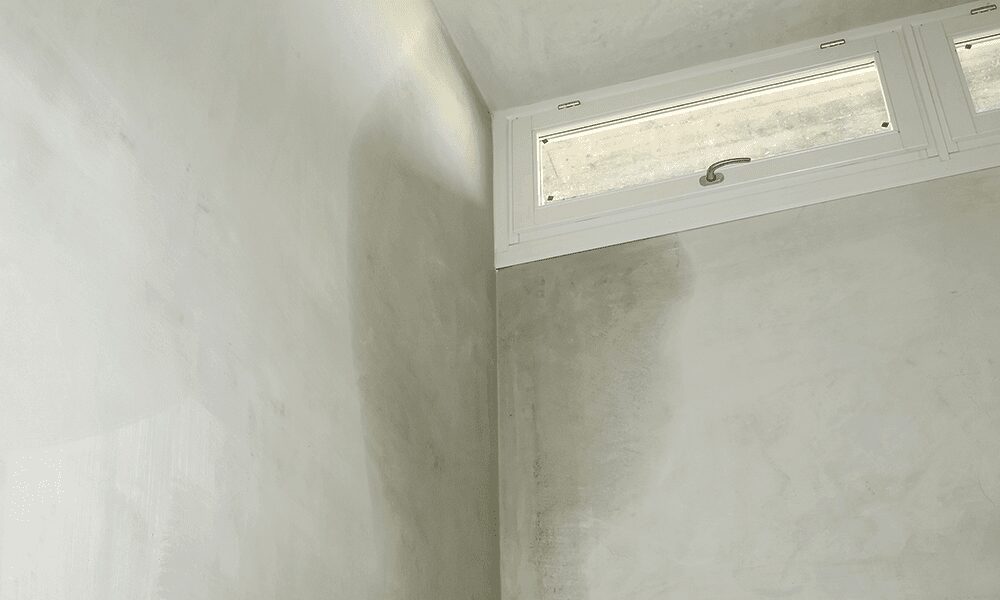
Gutter clogged or leaking
A gutter allows water to leave through the downspout when it rains. If you don't have a gutter, water flows down your facade and you risk exposing your facade to rainwater for too long.
So moisture problems can also be the result of a clogged gutter or a leak in the pipes. Unfortunately, this does not resolve itself; on the contrary, it only gets worse. By the way, a clogged gutter is worse than having no gutter at all, because with a clog, a large amount of water accumulates in one place.
Solving this problem can be done as follows:
- Unplug your downspout and properly maintain your gutter. You can do this simply by taking a ladder and taking out all the leaves that are in it. Especially in the fall, this is important.
- In case of a leak: contact a leak detection company. After all, it is difficult to pinpoint the exact location of the leak. In addition, the plumber can seal the leak purposefully and efficiently.
Excessive moisture
Rising damp is caused by direct contact between a brick wall and a damp wall. In problems of rising damp, groundwater is the main cause. The foundation and walls absorb this water, resulting in the most severe moisture close to the ground, but it can also spread further into the wall. This can cause significant damage to both interior and exterior walls.
The solution? Waterproofing the exterior wall by injecting a chemical product into the wall. A professional injects a moisture-resistant coating into the wall through drilled holes. This coating acts as an artificial barrier against water. After this step, the professional seals the drilled holes with waterproof mortar.

Condensation water
Wherever the air is too humid (think of a bathroom), condensation forms. And this, too, can eventually cause moisture spots on walls. In such places, adequate ventilation is the solution. You know what to do in the bathroom!
What can you do yourself to remove moisture stains on a wall?
As we mentioned, the first thing to do is definitely contact a professional to fix your moisture problem. Only after that can you repair your wall yourself. If you do want to get started yourself, here are a few helpful tips:
- Tackle the cause of the damp wall. If you suffer from rising damp, first make sure that the source of this moisture problem is drained using, for example, wall injections. This involves injecting a new water barrier layer. Ask here for a free moisture diagnosis for a first thorough analysis.
- Remove the wallpaper or remove the paint from your wall with a putty knife.
- Apply a moisture repellent, e.g. Aquaplan.
- Do you have cracks? Fill these up with putty.
- Make sure your wall is not soaked and then apply three layers of moisture-resistant coating.
- When everything is done and the wall is dry, you are ready to wallpaper or paint the wall again.
Attention! The instructions above will help you to remove moisture stains from your wall and not to conjure up mold. It is best to kill fungi with chlorine bleach. After the fungi disappear, rinse the chlorine away with warm water.
Do you suffer from moisture spots on your walls?
You prefer to avoid moisture problems, but if they are there, they just have to go. Period. Unfortunately, solving and removing moisture problems is not exactly a job that can be done in an instant. That's why AquaConsult offers you support you can't say "no" to.
Looking for more information around moisture control? Then be sure to read our blog on moisture problems and solutions.
Moisture control: don't make these 7 mistakes
A moisture problem often involves more than you think. Then it's tempting to make one of the following 7 mistakes in solving moisture problems. We go over them briefly: here are the 7 most common mistakes in moisture control in the house.
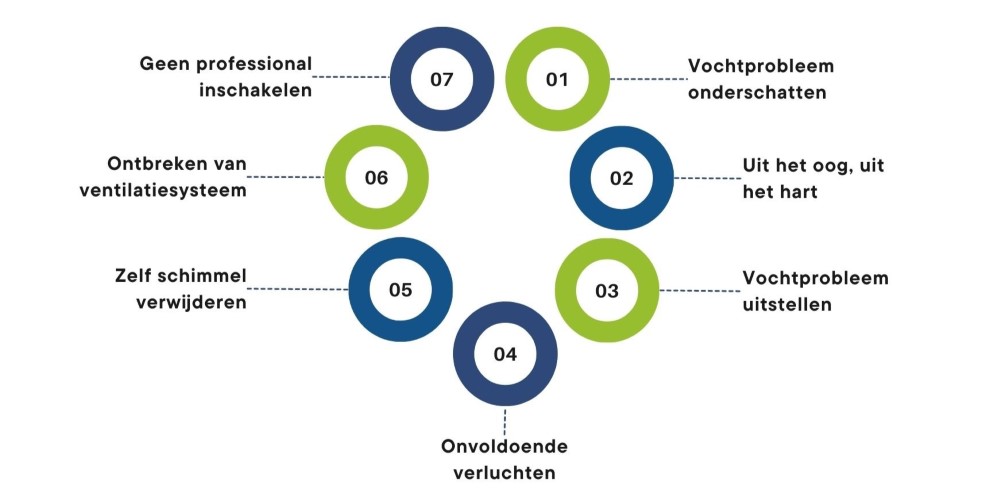
1. Underestimate moisture problems
Moisture problems really should not be underestimated. They often involve much more than just a damp spot on the wall or mold in the house. This is why moisture experts exist. Moisture problems are the cause of a number of other woes.
For example, excessive humidity can be the cause of a lot of health problems; especially if you already suffer from underlying respiratory conditions or suffer from rheumatoid arthritis. It can also trigger allergies in children, the elderly or people with weaker immune systems.
Moisture problems not only cause health problems, but also problems to your home. We give some examples:
- Are you suffering from black mold or moisture in your basement? If so, it can cause damage to the structure of your home.
- If you suffer from penetrating or rising damp, you may suffer damage to your exterior walls. During cold nights in winter, water freezes in the walls, causing cracks to form in the wall.
In addition to health problems and home damage, moisture problems also increase energy bills. This is because damp rooms are much more difficult to heat.
So definitely don't underestimate moisture problems, and get timely moisture control in your home.
2. Having the conviction: out of sight is out of mind
"A damp spot on the wall? A lick of damp-proof paint or a new layer of wallpaper and you won't see it anymore!" This is a reasoning we often hear, but unfortunately this is not a watertight solution.
In fact, this does not equate to effectively solving the moisture problem. Moisture experts are clear and unanimous about this: camouflage is not a solution. You will still face the same problems: structural damage to your home, chances of health problems flaring up.
The moisture problems then grow silently.
3. Put off fighting moisture in the home
We all know it: we'd rather put off those unpleasant jobs around the house. Yet when it comes to fighting moisture in the home, that's not a good idea. As mentioned earlier, moisture problems can cause a lot of trouble. And the longer you put off the solution, the worse the problem gets and the bigger the works are likely to be.
Notice a damp spot on the wall? Then contact AquaConsult right away and our moisture experts will be happy to help you.
4. Not airing your home on cold days
In winter, we prefer to keep all the cold outside. Still, it's a much better idea to ventilate your home even when it's freezing outside. Thanks to proper ventilation, you avoid excessive humidity, which could cause problems such as mold on the wall.
So open your windows for at least 10 minutes a day to avoid moisture problems.
5. Trying to remove mold yourself
Mold - especially black mold - on walls is very persistent. If you try to remove large patches of mold yourself, you usually haven't removed everything and it comes back quickly. Also, as a do-it-yourselfer, you cannot address the cause of the mold. In fact, there are a lot of different possible causes:
- Poor ventilation
- Resuscitating moisture
- Condensation
- ...
A moisture expert can determine the exact cause and therefore also apply the most appropriate moisture solution, which will completely eliminate the mold.
So can you really never remove mold yourself?
Still. If the mold on the wall is not too bad, you can remove it yourself. But then you have to be careful: inhaling mold spores can cause serious health problems, with examples such as respiratory problems, fatigue, nausea, and so on. So be sure to always wear gloves, a mouth mask and protective glasses. Also, removing mold yourself is only possible if it is a few black spots on the wall. Are the spots larger? If so, be sure to call in a moisture expert.
6. Not having a ventilation system in well-insulated houses
A well-insulated home has many benefits. The biggest advantage is the impact on your energy bill. Yet it also has one major disadvantage: there is no air circulation in the house. Without a ventilation system, damp air gets a chance to settle in the walls. That can cause mold or other moisture problems.
With a good ventilation system, you don't have that problem. Then the air in the house is refreshed on a regular basis and moisture has no chance to settle in the walls. This also saves yourself the energy of having to fight moisture in the house.
7. Not using an expert in moisture control
A final mistake people make is not calling on a moisture expert. This is because not all moisture problems have the same cause, and each requires its own approach.
An expert can use certain tools to determine exactly what the problem is and exactly what needs to be done to solve the moisture problem. Only then will the correct diagnosis be made and you get exactly the help you need. This is the only way to effectively combat the moisture in your home. In addition, with some solutions you have a chance to win the Flemish renovation premium.
Are you suffering from moisture in your home? Then don't delay and request your free expertise. Our moisture experts will be happy to visit you.
Tackle hay fever with ionization
Hay fever. It's a necessary evil that a lot of people have to go through once the sun comes out. Usually hay fever is worst outdoors, but it can also affect you inside your home or office. But did you know that there is a way to tackle hay fever in indoor spaces? Namely, with an air purifier. How does an air purifier keep your home free of hay fever and, by extension, allergies? AquaConsult explains it briefly for you.
What exactly is hay fever?
Before we can explain to you how AquaConsult tackles hay fever, it's important to know exactly what hay fever is. Hay fever is one of the most common allergies and is also known as pollen or pollen allergy. Here are some preliminary facts about this annoying allergy:
- It is estimated that as much as 25% of the Belgian population suffers from it.
- Hay fever is caused by pollen or pollen grains from grasses, weeds or trees. Houseplants can also cause these symptoms.
- It is actually an overreaction of the immune system and causes annoying symptoms such as itchy and watery eyes, a runny or stuffy nose and sneezing.
And the number of pollen grains is always rising. For example, in the year 2022, a record number of pollen grains was measured in 40 years: 433 pollen grains per square meter. You already get symptoms at 50 grains of pollen per square meter. According to health institute Sciensano, the hay fever season will change because of climate disruption: the hay fever season will start earlier, last longer and there will be more pollen in the air. Not pleasant, in other words.
What is the best thing to do about hay fever?
It is not always possible to stop pollen or pollen. When you head outside, you can check the hay fever radar or take targeted medication, but usually your options end there.
Indoors, however, there are more options. For example, an air purifier can effectively reduce hay fever and its symptoms. A particularly effective type of air purifier for this purpose is the ionizer. This device is specifically designed to purify indoor air through ionization technology, which rids the air of unwanted microparticles. These microparticles include viruses, allergens, particulate matter, as well as pollen and pollen particles. This air purification technology can be integrated into your air conditioning or balance ventilation system, instantly purifying the air as you ventilate and cool it.
Our sister company AeroConsult specializes in air purification and ionization. With their systems, we make sure that your airways can actually rest at home. So you recover better, sleep well and can breathe deeply in and out with relief.
How does ionization work in an air purifier for hay fever?
So ionization purifies the air of anything that can bother you. You can no longer breathe in the pollen or pollen particles so you no longer suffer from the symptoms. But how exactly does ionization work?
- AeroConsult's systems produce billions of ions of ions per second. It creates a so-called plasma field filled with positively and negatively charged ions.
- Those electrons cause the microparticles to clump together, making them filterable.
- The number of pollen or pollen particles in the air is thus greatly reduced, and the air is cleaned.
It has been scientifically proven that ionization really works. Moreover, the GPS technology used in AeroConsult's systems is the only air purification system approved for use in aviation and ionization is the only system that does not create ozone while purifying the air. Perfect for use in both residential buildings and larger buildings such as offices or schools.
Ionization is installed in your air conditioner or balance ventilation through an ionization strip or an ionization system. It is very low maintenance and it consumes much less energy than other air purification systems.
Air purifier with ionizer for better sleep
Symptoms of hay fever can get worse at night. Even then, an air purifier with ionization is good for hay fever. This is because the air purifier improves the air quality. Because you lie in a room where the air is purified and free of allergens, you sleep better. Since you obviously do not want to be disturbed, it is important that the air purifier does not make more than 30 decibels of noise or that it has a special night mode.
Where can I get such an air-cleaning ionization system?
Want to install an air purifier with ionization system at your home or in a public space? Then contact AquaConsult and our experts will be happy to help you. It is also possible to purchase an ionization strip for air conditioners or an ionization system for balance ventilation through AeroConsult's webshop.
What is the technical ATG approval?
Technical Approval
The general technical approval (ATG certificate) provides a technical opinion, including a description and technical properties. An ATG is a favorable assessment and declaration of suitability for use of one particular construction product from one manufacturer for a well-defined application. It is intended for innovative products and building systems for which no or insufficient standards exist.
Based on documented product performance, an ATG determines whether the product is suitable for a particular application and provides instructions for installation or handling. This ensures that these products and building systems are suitable for use, can be used or installed without risk and are of good quality. All this according to the rules of the art of the Belgian market.
The different variants of technical approvals
Over time, different types of technical approvals have been developed to meet the specific requirements of industry stakeholders. Some types include:
- ATG/H: for materials, products or kits.
- ATG/S: for wood treatment plants.
- ATG/M: for the use of road markings.
- ATG/E: for energetic innovations.
- ATG/D: for the curative treatment of wood.
- BENOR/ATG: technical approval linked to a BENOR certificate.
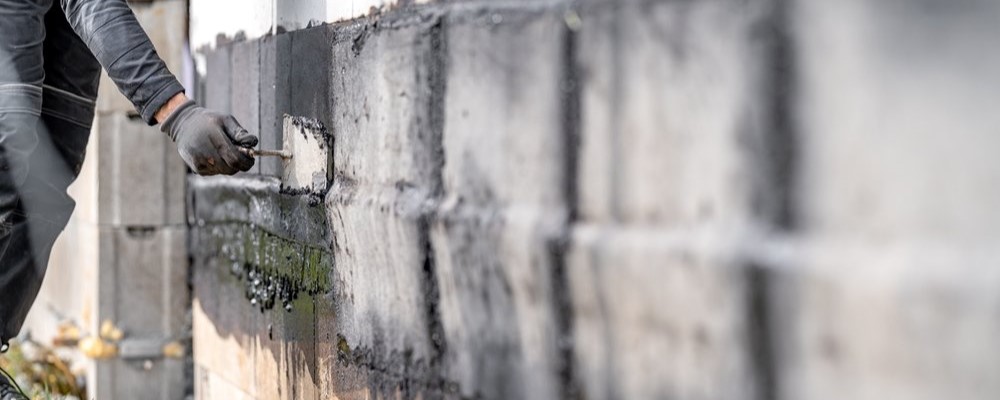
The advantages of an ATG certificate for consumers
An ATG label allows the user to check the conformity of the products delivered to the construction site with the existing approval. Since ATG certificates are issued for products and systems for which no product standards exist (yet), this is the only way to see if the products are approved and therefore of good quality.
Innovations in the construction industry are important to be more efficient in the long run. ATG certification ensures that construction sites do not become laboratories to test out those innovative ideas and thus customers are protected.
Who gets the ATG certificate?
In principle, an ATG is issued on the basis of an approval guideline. Such guideline is prepared by experts from the Belgian Union for Technical Approval in Construction (BUtgb) and provides an assessment basis for construction products. When you apply for technical approval, they then use simulations to test whether or not a product's performance decreases over time, which is a quality indicator.
On top of this, there is usually a certification, which means that a certification body mandated by the BUtgb conducts external monitoring, at a set frequency, of the conformity of production with the published approval. This review or monitoring is described in a convention drawn up when the ATG is granted. This convention specifies how the manufacturer organizes its own control of production and which external tests will be carried out in the process.
ATG certification allows companies like AquaConsult to apply non-traditional products and techniques without danger.
The difference with the European technical assessment
The European Technical Assessment, or ETA, is a legal instrument created by the European Construction Products Regulation. It is another way for manufacturers to show that their products are good and safe to use , and again, the application must be voluntary and at the initiative of the applicant. If a product gets this approval, the manufacturer is allowed to put a CE mark on the product. When they have that mark, they are allowed to sell this product in all countries of the European Union. So basically, the European Technical Assessment is a kind of key that gives you access to the market in Europe.
AquaConsult is a member of these building federations and quality labels
AquaConsult holds every major construction certification. This allows us to guarantee everyone the lowest price for the highest quality and guarantees. We only work with top products, which means that moisture problems will disappear permanently and will not return after 10 years. We offer a guarantee on our works of at least 20 years.
- BUtgb: Belgian Union for Technical Approval in Construction. The institute that issues technical approvals for building materials, products, systems and of installers.
- Buildwise: Scientific and Technical Center for the Construction Industry.
Are you suffering from a moisture problem in your home? Then contact AquaConsult and our field engineers will be happy to help you.
What is floor drainage in the basement?
Moisture problems can occur in many places in the home. Often, however, the basement is the most damp place in a home. Do you often notice puddles of water in this room? Possibly it is soil moisture that largely makes its way in through the basement floor. In that case, floor drainage of your basement may well be the appropriate solution. Read on to find out how such a moisture solution works.
What is floor drainage in the basement?
Waterproofing a basement in general two ways:
- Via cellar tubing
- Via basement drainage
Floor drainage falls under the category of basement drainage, and is closely related to edge drainage and wall drainage. This form of basement drainage is used when moisture enters through the basement floor because it is under high pressure from groundwater. This can occur with porous floors, such as a basement floor composed of bricks, for example.
Traditionally, a moisture expert is going to install a bubble liner or membrane when doing floor drainage. This works as follows:
- This bubble wrap consists of a very strong material and has a special structure of all small channels.
- Through these small channels, groundwater is collected and directed to a single drainage well. This drain well is drilled at the lowest point of the basement, allowing the water to drain naturally.
- The water in this collection well is then pumped out through a drain by means of a water pump. In most cases, this water pump has sensors, so it does its job automatically.
- Between the strips and on the sides of the bubble wrap, stick a strong waterproof tape, so that groundwater seeping in has no chance of escaping the channels.
- Finally, the moisture expert applies a new layer of concrete on top of the studded membrane. Because the groundwater under this new floor is neatly drained, floor drainage is a durable solution that is also not visible.
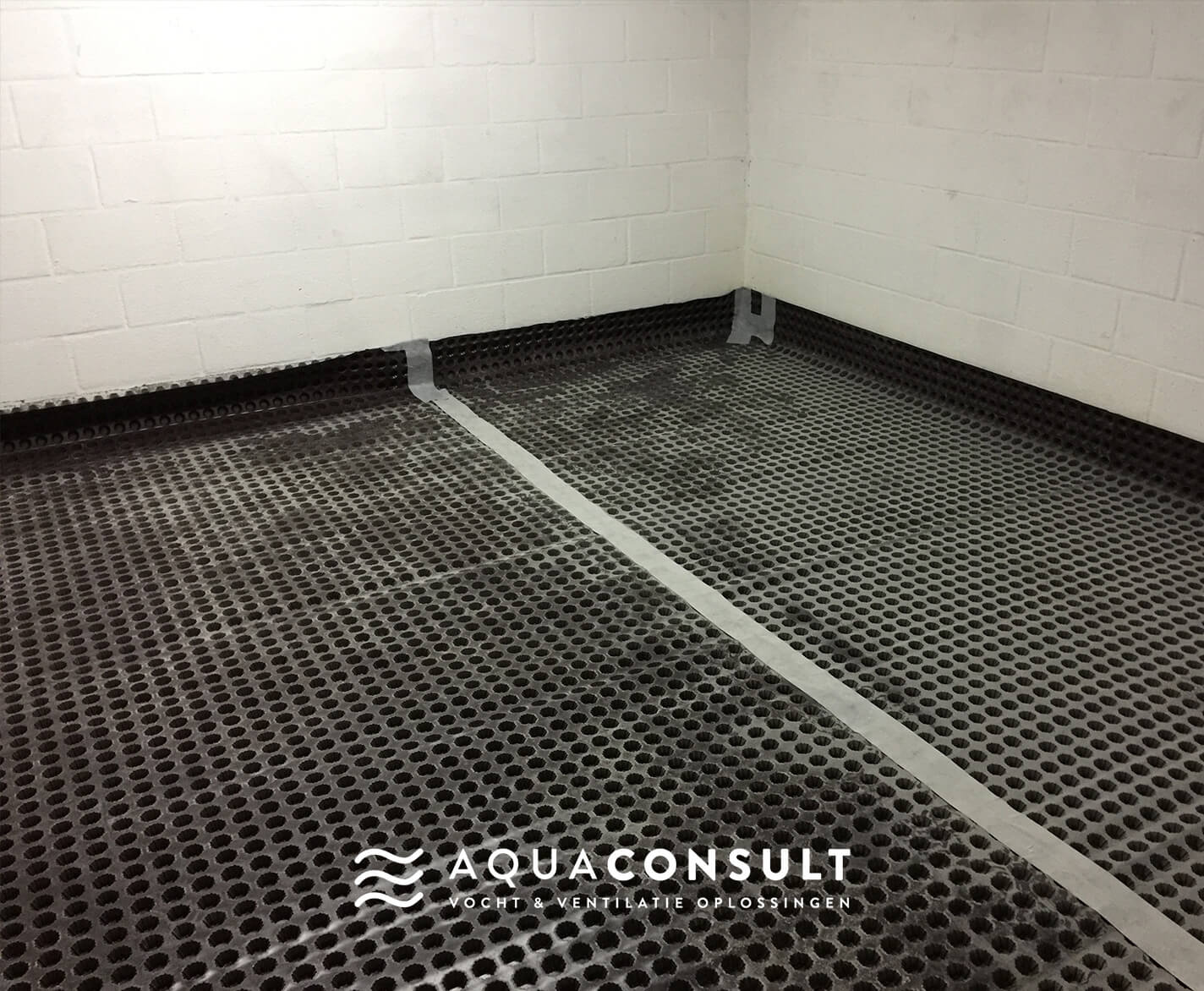
When the new floor has hardened and dried sufficiently, the moisture problem is permanently eliminated. You will lose about 8 cm of height in the process. It is advisable to seek the help of an expert if you want to have your basement floor drained. This is because it guarantees an accurate evaluation and a professional execution of the necessary work.
Unique approach: basement floor drainage with AquaConsult
At AquaConsult, we have a certified alternative method of doing floor drainage. Instead of adding another layer of concrete above the bubble wrap, as described above, we install certified ceramic tiles. The tiles are elastically grouted using a unique process so they never come loose.
Our approach has several advantages:
- Unique in Flanders
- Complete and beautiful finish
- Choice of different colors
- Only a maximum loss of height of 5 cm
- Standard 20-year warranty
- Also possible for basements
Would you like more information about this solution? Please feel free to contact us.
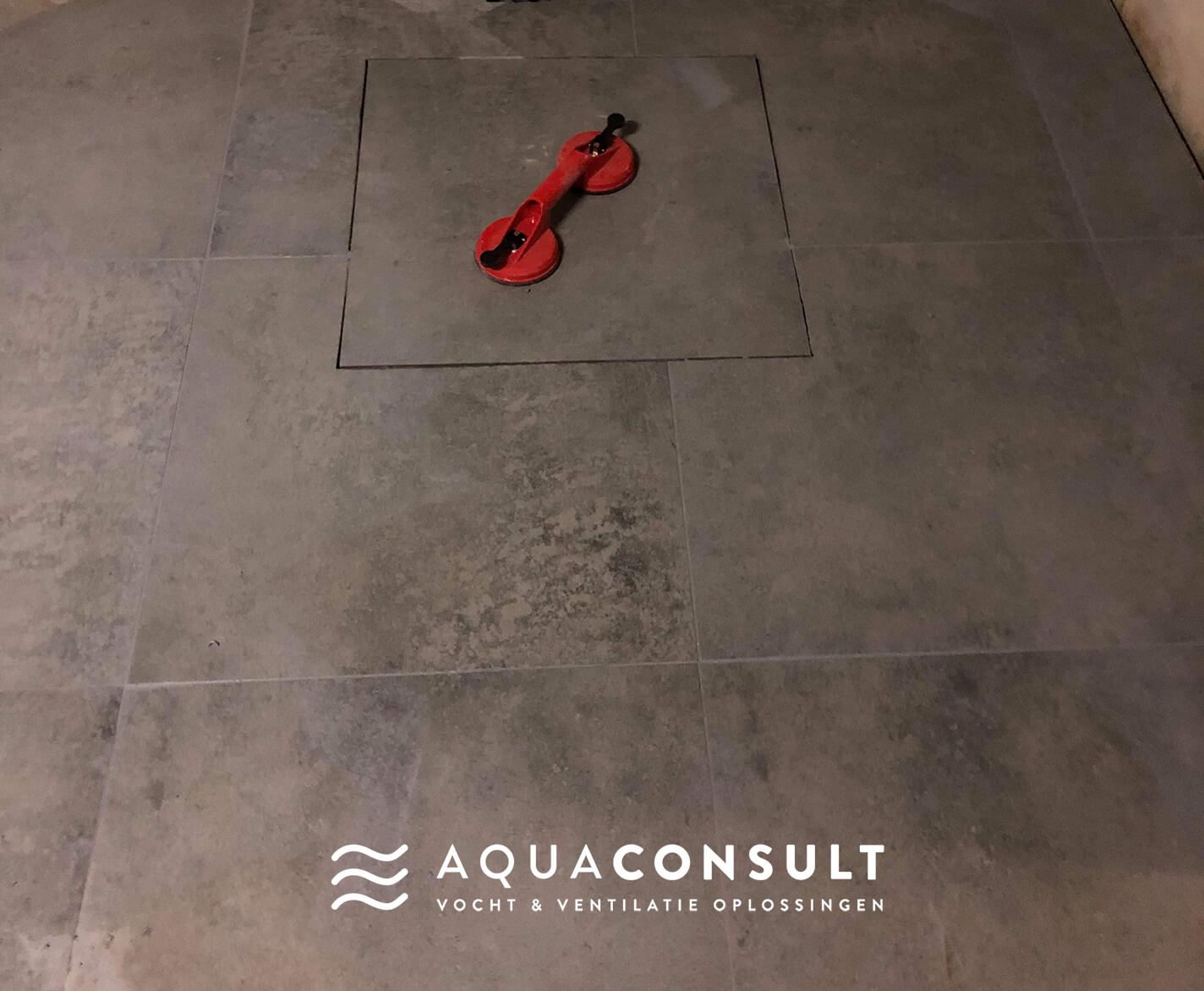
How is floor drainage different from basement drainage?
In basement waterproofing, also known as basement sealing, a waterproof plaster is applied in several stages or layers to both the walls and floor of the basement. These layers then dry out and collectively form a protective barrier against moisture.
When determining the best-fit solution, we always consider the groundwater pressure. If the groundwater pressure is too high, basement waterproofing may not be the most appropriate method of moisture control. It is not obvious to determine exactly how high the groundwater pressure really is. Get the assistance of a moisture expert for this.
The benefits of floor drainage in the basement
The biggest advantage of having floor drainage performed (professionally) in your basement is, of course, that the moisture problem is solved efficiently. The groundwater that seeps into the basement through the floor is effectively drained thanks to the floor drainage. Do you combine the floor drainage with wall drainage? Then your entire basement is protected from water entering.
Floor drainage in your basement also has other benefits:
- Possible mold growth is counteracted
- You avoid structural damage to your home, preserving its value
- The basement becomes usable again as a storage area, for example
Is floor drainage the solution to your moisture problem?
Whether basement floor drainage is the ideal solution to moisture in your basement depends on several factors. In some cases, basement waterproofing or ventilation is a more appropriate method. Therefore, we recommend having a thorough moisture analysis done to determine the cause and extent of the moisture problem. Only then can it be determined whether or not basement floor drainage is the most appropriate solution for your situation, and a good estimate of the cost of the procedure can be made.
Do you have a damp basement and are looking for a suitable solution? Then AquaConsult is the right place for you. Contact us now, or request a free moisture expertise.
Unique in Flanders: have your basement poured with ceramic tiles
When soil moisture enters your basement, problems such as a damp basement floor, damp basement walls, musty odors and mold can occur. Obviously, this is something you want to avoid. One possible solution to this is basement waterproofing. Where basement waterproofing was previously only possible with concrete, AquaConsult offers a unique alternative: waterproofing your basement with ceramic tiles. Read all about it here.
What is basement cupping?
In many basements, the basement walls and floor are not sufficiently resistant to the pressure of groundwater. This causes salts to form in the walls, which then affect the plaster present. In this way, soil moisture can enter your basement through the basement walls and/or floor, which can have negative consequences. To combat this, you can have your basement drained.
In a basement waterproofing or basement sealing, the basement floor and walls are covered with a thick layer of waterproof cement. This creates a new protective layer, as it were, which ensures that groundwater can no longer pass through. Specifically, such a basement waterproofing works as follows:
- We remove the current occupation as much as possible to make the substrate visible. This allows us to determine where water is seeping through the wall, and a quick-drying waterproof cement mortar is applied to those areas.
- As soon as we determine that no more water is coming through the walls, we apply an initial seal coat.
- When this first layer has dried sufficiently, we proceed with another layer of cement mortar.
After performing (or having performed) these steps, water will no longer enter your basement.
Note that each situation is unique. In some cases, basement waterproofing is not sufficient, and basement drainage or ventilation will be required. Let AquaConsult assist you and request a free expertise to ensure you make the best choice for your basement.
Pair the practical with the pleasant: have your basement poured with a tile finish
Traditionally, basement waterproofing is done exclusively with a waterproof layer of concrete. But, you can also go a step further and have your basement waterproofed with certified ceramic tiles. AquaConsult is unique in this, and there are several advantages to doing so:
Less place loss
A basement casing is always accompanied by some loss of space. Typically, such loss with a traditional casing is about 8 cm, but with a tile finish this loss is reduced to about 5 cm.
Complete and beautiful finish
This basement sealing method automatically creates a nicer-looking basement that is also fully finished right away.
Cheaper
Basement waterproofing with ceramic tiles also comes with a more interesting price tag than basement waterproofing with concrete. Basement waterproofing actually involves renovating the entire basement, which of course is not cheap. However, with this unique process, the sealed basement is also immediately finished with certified ceramic tiles of 60 cm × 60 cm, which saves you in finishing costs. In addition, fewer materials are also needed to keep your basement dry, which benefits your wallet.


Do you have a damp basement and are looking for a suitable solution? Then AquaConsult is the right place for you. Contact us now, or request a free moisture expertise.
Is black mold dangerous to your health?
Mold come in all sizes and colors, but the best known is black mold. What exactly is black mold? What are its causes or solutions? And is black mold dangerous to your health? We list it for you.
What is black mold?
Many fungi are dark in color. But, when we talk about black mold, this refers to one specific species: the Stachybotrys Chartarum. This one - as its popular name implies - is black or very dark and is found mainly in damp places in the house. This can be on the walls, but also in the kitchen or bathroom. In the initial stages, the mold will take the form of small black dots. If it is not remedied immediately and the room remains damp, the heavy dots will spread to larger spots. Black mold becomes increasingly easy to spot in this way.
How dangerous is black mold in the home?
Having heavy mold in your home really only brings negative consequences. Black mold is not only a detriment to your health, it is also harmful to your home.
Black mold: a danger to your health
Black mold is also sometimes called the toxic mold. Once it nestles on walls, it can pose many health risks. They emit mycotoxins. It is not deadly, but it can cause a lot of symptoms:
- Nerve and joint pain
- Respiratory problems
- Irritated eyes
- Fatigue
- Nausea and vomiting
- Sore throat
- Allergic reactions
Children, seniors and vulnerable people - with chronic diseases, for example - are especially susceptible to this.
With small black spots in the shower, don't panic right away. Are there already large black spots on the wall? Or does it smell musty? Then you do need to take action.
On the other hand, are there black spots in the nursery? Then do something about it right away, because it is anything but healthy. Especially children will quickly experience negative effects.
Black mold: a danger to your home
Not only is black mold dangerous to your health, but in some cases it can also be a hazard to your home.
- Black mold affects various things such as drywall and plaster.
- But the structure or structure of your home can also be affected by black mold, weakening your home.
- Also, black mold likes wood and often settles in the wooden structures of your home, and once black mold is in wood, it is difficult to get rid of. This often requires replacing all the wood.
Fortunately, this is something you can prevent. Black mold does not affect the structure of your home overnight. If you catch it in time, you can protect your home.
What are the causes of black mold? And their solutions?
Black mold usually develops as a result of moisture problems, such as a damp basement or rising damp. The spores of black mold are often already floating in the air, but pose no danger until they can spread and multiply on and in the walls as a result of moisture. The severity of moisture problems can vary, but mold generally thrives in damp conditions and at temperatures between 17 and 25 degrees Celsius.
Below are some common causes of moisture problems:
1. Inadequate ventilation
Do you find black mold in rooms where it is often damp, such as the plumbing or basement? Then chances are the cause is poor ventilation. If the moisture can't get out, it settles in the walls. That's the perfect place for black mold to develop.
The solution - rather logically - is a ventilation system that purifies the air and removes the moisture.
2. Condensation moisture
Do the black spots occur on windows, in room corners, on the outside wall or in other random cold places? If so, it is most likely about condensation moisture.
Condensation occurs when you generate hot air; for example, when you cook or when you take a shower. That warm air settles on the cold surfaces where it condenses.
When that happens every day, those cold surfaces are constantly damp, giving the fungi a chance to reproduce.
Again, the solution is a ventilation system so that the moisture disappears from the air.
3. Penetrating moisture
Are you finding black spots in random places on the walls? Are they found on all floors of the house? If so, you may be suffering from penetrating moisture.
Permeable moisture occurs when rainwater passes through walls without a cavity, making its way into the interior.
4. Rising moisture
If black mold is present mainly at the bottom of the walls and is slowly migrating upward, with no water pipes running in that area, this probably indicates rising damp. This is groundwater migrating up through poor foundations, a faulty water barrier, or the lack of a water barrier in the walls.
To address rising damp effectively and cost-effectively, injecting the walls is the most recommended solution.
Beware: These are not uniform causes. Other moisture problems can also be the cause of black mold. Be sure to contact a professional to get the right diagnosis AND the best solution.

How do I remove black mold?
Are there only black dots on the wall, in the kitchen or in the plumbing? That means it hasn't been there long and hasn't yet nestled deep into the wall. You can feel free to work on your own.
- So you can scrub the wall with baking soda and water,
- You can also attack the mold with bleach,
- Or you buy a special fungicide at the do-it-yourself store or supermarket.
Beware: Never handle mold dry. Then there is a danger of inhaling the mold spores. Also, always wear a mouth mask and non-porous gloves during treatments to guard your own health.
What if the mold is extensive?
As mentioned earlier, black mold can be dangerous to your health as well as your home, and it's not always a good idea to tackle it yourself. Especially for the large and stubborn mold spots.
Also, removing mold yourself is not always a definitive solution. A moisture expert tackles the cause. This way, we ensure that the air in your home is clean again and your health and the health of your family members are no longer at risk from black mold.
Are you suffering from black mold? Request a free moisture assessment from aquaconsult now.
Request more information and brochure
Answer the questions below and get more information and our brochure. Would you like to have the cost price calculated? Please indicate this clearly in the text field below and we will do the necessary.







